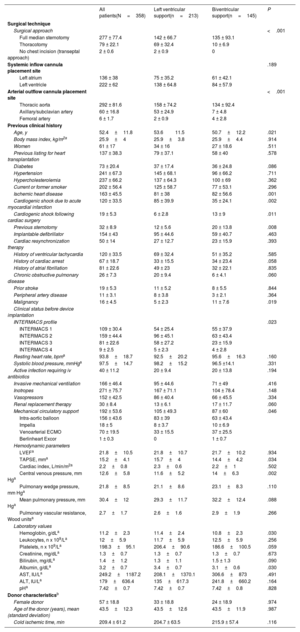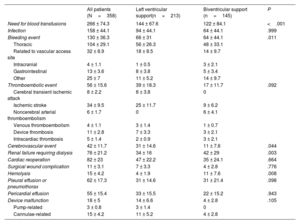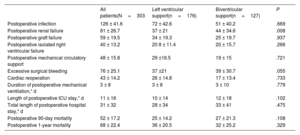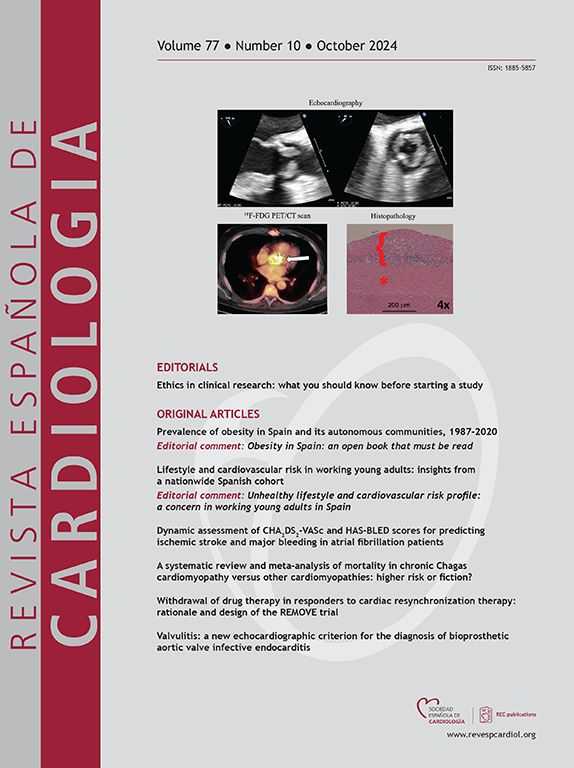
We aimed to describe the clinical outcomes of the use of the CentriMag acute circulatory support system as a bridge to emergency heart transplantation (HTx).
MethodsWe conducted a descriptive analysis of the clinical outcomes of consecutive HTx candidates included in a multicenter retrospective registry who were treated with the CentriMag device, configured either for left ventricular support (LVS) or biventricular support (BVS). All patients were listed for high-priority HTx. The study assessed the period 2010 to 2020 and involved 16 transplant centers around Spain. We excluded patients treated with isolated right ventricular support or venoarterial extracorporeal membrane oxygenation without LVS. The primary endpoint was 1-year post-HTx survival.
ResultsThe study population comprised 213 emergency HTx candidates bridged on CentriMag LVS and 145 on CentriMag BVS. Overall, 303 (84.6%) patients received a transplant and 53 (14.8%) died without having an organ donor during the index hospitalization. Median time on the device was 15 days, with 66 (18.6%) patients being supported for> 30 days. One-year posttransplant survival was 77.6%. Univariable and multivariable analyses showed no statistically significant differences in pre- or post-HTx survival in patients managed with BVS vs LVS. Patients managed with BVS had higher rates of bleeding, need for transfusion, hemolysis and renal failure than patients managed with LVS, while the latter group showed a higher incidence of ischemic stroke.
ConclusionsIn a setting of candidate prioritization with short waiting list times, bridging to HTx with the CentriMag system was feasible and resulted in acceptable on-support and posttransplant outcomes.
Keywords
Identify yourself
Not yet a subscriber to the journal?
Purchase access to the article
By purchasing the article, the PDF of the same can be downloaded
Price: 19,34 €
Phone for incidents
Monday to Friday from 9am to 6pm (GMT+1) except for the months of July and August, which will be from 9am to 3pm








